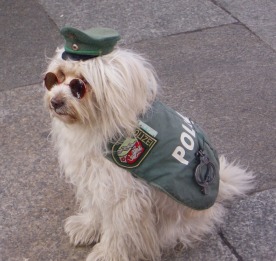POLICE DOG TRAINING

In general, dogs are loyal. They are protective of their keepers/trainers. They are fierce and strong. They are quick and keen. They are capable of responding immediately and acting logically. They are very smart and are easily trainable. On top of it all, they are industrious, task-oriented, and committed. They are man's best friends. These are the many reasons why dogs were chosen to be the companions of our security forces.
Nowadays, you see many security personnel and authorities from the police and military forces that are accompanied by dogs. Usually, they choose German Shepherds, but through advanced training and experimentation, other breeds are now of use to the military as well. Police dogs are commonly used for tracking purposes, for search and rescue operations, and for security attack purposes.
Police Dog Training requires training not just for the dog but for the handler as well.
Both the dog and his handler will be chosen from a wide variety of aspiring dogs and individuals. After selection, they will be subjected to careful training so as ensure that they have all the required skills for the police services.
For the prospective dog handlers, they are usual given a probationary training that will last for two years. This involves lectures about proper dog-training techniques, canine psychology, dog-learning processes, veterinary practices, canine physiological needs, and legislation. The training will demand both physical and mental abilities from the trainer, not to mention utmost patience and commitment.
As for the dog, the police dog training is designed to develop the protecting and attacking skills of the dog, while improving the natural canine instinct and behavior as well.
For the dogs, the first step in the police dog training is the identification of the natural abilities of the dog. Obedience training and aggression control is also taught. Essential to proper police dog training is a controlled temperament of the dog even in the presence of strangers and other pets.
Throughout the training, a particular concept that should be embedded well to the dog's behavior is the urge to protect and serve the pack leader- that is identified as the dog's handler. The training's primary goal is to teach the dog to follow the handler's orders, respond to the handler's needs, and protect the handler from threats.
After the training, the dog should be able to track offenders or missing persons through scent; search and track bombs, drugs, or dangerous chemicals; apprehend escaping offenders; and protect their handlers during dangerous situations.
All throughout the police dog training, a strong bond between the dog and the handler should be maintained. Positive reinforcement should also be used throughout the whole training process so as to ensure progressive learning and motivated behavior.
